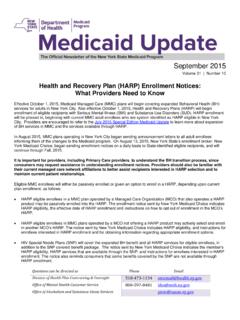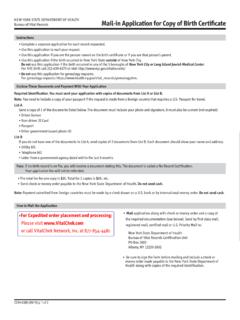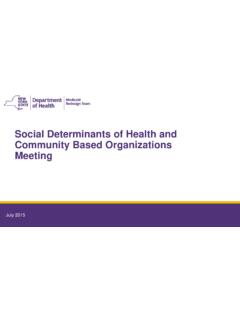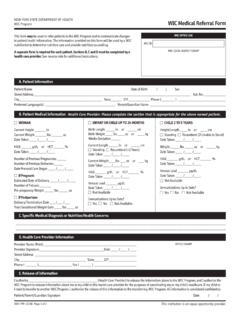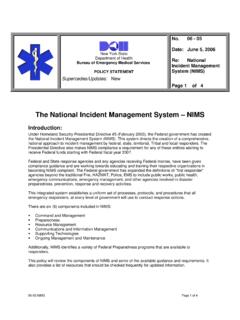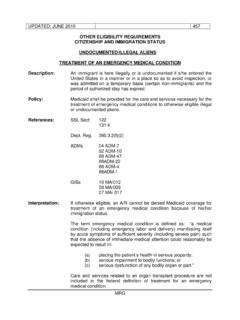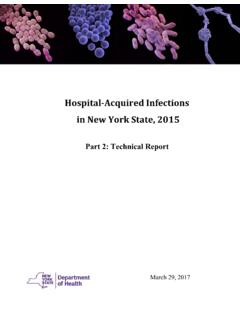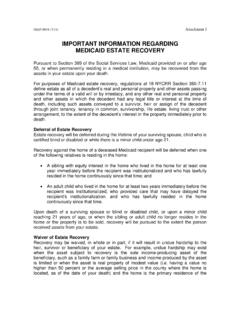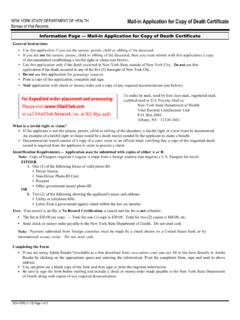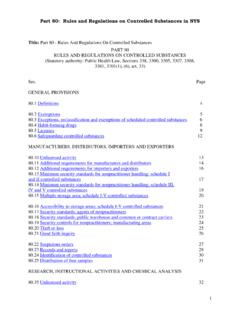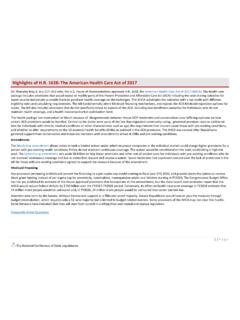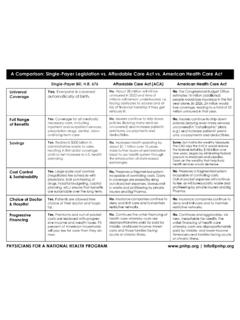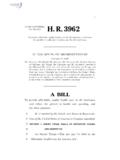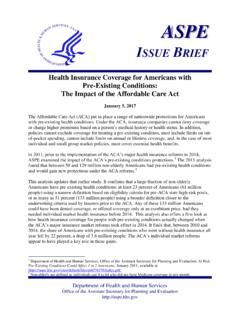Transcription of Impact of the House Bill American Health Care Act
1 Impact of the House Bill American Health care Act The House Republicans have released their Repeal and Replace legislation which will have significant financial implications for NYS which will grow from $240M in SFY 2017-18 to $ by SFY 2020-21. Below is a summary of the features of the bill and details on its financial Impact . Modifies Medicaid Expansion / Enhanced FMAP The House Bill impacts the enhanced FMAP provided in the ACA for the expansion population (single/childless adults 0-138% FPL) in two ways: 1) NY and 12 other states that previously covered single/childless adults at 0-100% FPL will have their FMAP reduced from current 90% to 85%, effective January 1, 2017; and 2) For new enrollees after January 1, 2020 the enhanced FMAP will decrease from 90% to 50%.
2 Per Capita Cap Calculation This will be a state-specific calculation in which states would receive a fixed dollar amount based on a 2016 base year expenditures (excluding DSH and Medicare cost share). The size of the per capita amount would be calculated based on average state spending on five defined subpopulation groups (elderly, blind/disabled, children, expansion enrollees and other). The base year will be trended by the medical component of the consumer price index for all urban consumers (CPI-U).
3 DOH is evaluating whether the State can spend within this growth amount. Reconciliation To the extent that a state has excess aggregate Medicaid expenditures for a fiscal year (beginning 2020) a take back will occur in the next year allotment. It is not clear that the reconciliation will adjust for changes in actual enrollment from the previous year. Two Year DSH Cuts on Expansion States Only The bill implements $2B in DSH cuts for expansion states only, effective FFY 2018, and growing to $3B in FFY 2019.
4 NYS share of the cut will grow from 15% under current law to 21% under the House bill. It should be noted that non-expansion states will receive five years worth of Safety Net Funding valued at $10B. Eliminates Essential Plan Eliminates Community First Choice Options (CFCO) ($ in millions) SFY 2017-18 SFY 2018-19 SFY 2019-20 SFY 2020-21 FMAP Loss/Phase Down on Expansion Population $26 $146 $250 $224 Break in Coverage lost eFMAP (20%) $0 $0 $210 $781 Essential Plan (net of HCRA taxes) $0 $0 $335 $1,190 DSH Cuts $214 $535 $321 $0 CFCO $0 $0 $70 $280 MCO Tax Repeal $0 $0 ($15) ($60) Net Impact $240 $681 $1,171 $2,415 County Impacts (included above)
5 $7 $37 $96 $178 Conclusions Over 1 Million New Yorkers would face significant loss of Health care . Over $ billion in costs would be shifted to states, counties, and safety net hospitals over the next four years increasing the tax burden on residents and putting countless healthcare providers in jeopardy. At least $ billion of these costs will be shifted annually beginning in 2020. This burden could grow even larger when the Impact of Medicaid block grants is taken into account. $400 million in tax credits used by New Yorkers to purchase Health insurance on the New York State of Health insurance exchange would be lost and replaced in some cases with alternative subsidies which are not related ability to pay.
6
